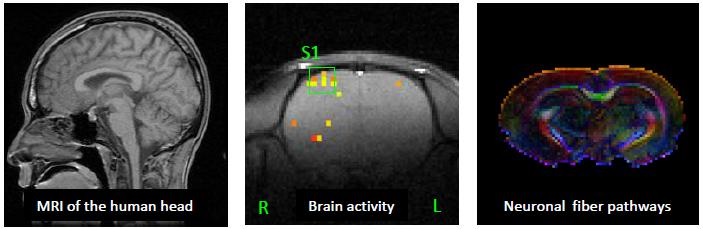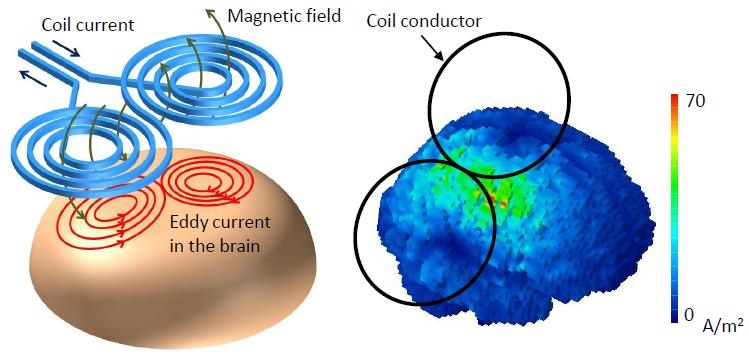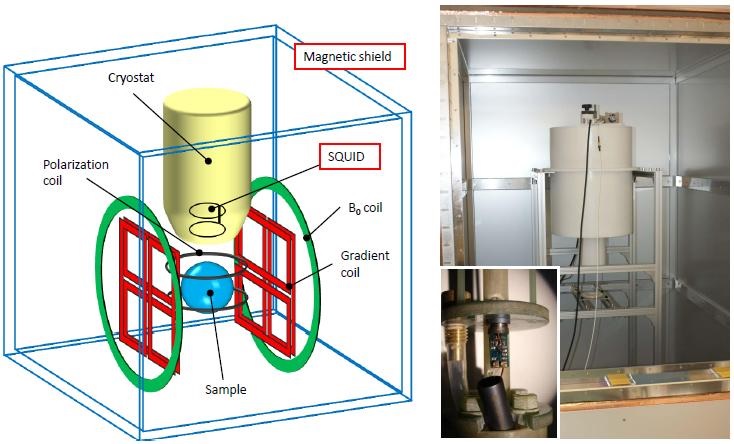Study fields
Novel MRI measurement techniques
Magnetic resonance imaging (MRI) visualizes the internal structures of the human body or various samples thereof. The images originate from nuclear magnetic resonance signals emitted from samples located in a strong magnetic field. Clear and precise images obtained from MRI are now essential in diagnoses of a lot of diseases such as cerebral stroke and cancer. While conventional MRI provides anatomical information mainly, our novel MRI measurement techniques enable us to obtain electrical information, namely electric current, magnetic field, conductivity, and permittivity. In previous studies, we demonstrated novel functional imaging of the brain using a detection of weak neuronal magnetic fields, and imaging of anisotropic conductivity of biological tissues.

Magnetic stimulation of the brain
Transcranial magnetic stimulation is a diagnostic or therapeutic method to stimulate neurons in the brain using magnetic fields. Pulsed magnetic fields generated from an external coil induces stimulating currents in the brain. Numerical simulations of electromagnetic fields are effective for investigating the distributions of magnetic fields and induced currents. The results then give a theoretical basis for optimizing the designs of the coil and driving circuit. We are working on, in collaboration with medical doctors and companies, the development of a compact and highly efficient magnetic stimulator for installing at patients' homes. Fabrication of a magnetic stimulator based on our original design concept is now in progress.

Ultralow-field MRI using a superconducting magnetic sensor
We are now developing an MRI system working with ultralow micro-tesla magnetic fields and detecting signals using a superconducting magnetic sensor, SQUID (superconducting quantum interference device). This MRI is free from the risk of accidents caused by strong magnetic fields. Moreover, the MRI system is applicable to samples containing metal, which conventional MRI cannot measure. The potential application of this MRI system is examination of patients wearing medical equipment.

Generation of homogeneous magnetic fields using high-temperature bulk superconductors for future applications to NMR
The high-temperature bulk superconductor is capable of trapping strong magnetic fields of up to several tesla in a compact superconductor body. One of the potential applications of the bulk superconductor is a magnet for a portable nuclear magnetic resonance (NMR) system. One of the technical challenges of this application is homogenizing the trapped magnetic fields. We have proposed a method to reduce the inhomogeneity by means of concentrically slitting a ring-shaped bulk superconductor.
